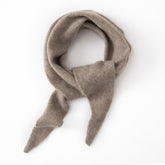Is Silk Breathable?
Wondering if silk is breathable? The answer is yes! Silk is a lightweight, luxurious fabric that allows air to flow, making it a great choice for warm weather. It helps regulate temperature, keeping you cool in summer and cozy in winter. In this guide, our silk experts break down why silk is breathable, what affects its airflow, and the benefits of wearing and using silk year-round.
Is Silk Breathable?


Yes, silk is a natural fibre and a breathable fabric. It has a distinct structure that allows for the best air circulation. The smooth fibres push away moisture and let heat escape while keeping you cool.
With materials like polyester, breathable properties aren't exactly a part of the deal, because polyester traps heat and moisture against your skin. Silk products help to regulate your temperature and have moisture wicking properties, so silk is the go-to fabric choice for hot climates. Silk keeps you cool, and it's the perfect choice for summer.
What Makes Silk a Breathable Fabric?
With silk being one of the most breathable fabrics for hot climates, you might be wondering why this summer wear is so cool. Silk’s breathability is due to its fibre structure. Silk fibres are long and contain microscopic holes that allow air and moisture to pass through easily. This breathability is improved by the presence of fibroin, a protein that forms the core of silk fibres.
The combination of these factors lets this natural fabric absorb moisture efficiently while wicking it away from the skin. So, it doesn't just feel luxurious against your skin; silk is naturally preventing you from overheating!
Mulberry silk, one of the highest quality types of silk that wicks moisture, is especially well-known for its breathable properties. The silkworms that produce this silk mainly feed on nutrient-rich mulberry leaves, creating fibres that are soft, luminous, and highly effective at moisture management. This makes mulberry silk a popular summer fabric choice for breathable garments and bedding over cotton and linen.
What Can Affect Silk's Breathability?


While silk is a splendidly luxurious fabric, there are a few things that can affect its breathability:
- Weave and Weight: The way silk is woven and its weight (measured in mommes) can affect its breathability. For example, lightweight silks like chiffon or habotai are generally more breathable than heavier silks like satin or 40 momme silk. This is because the smooth fibres of silk have a looser weave.
- Fabric Blends: Blending silk with other natural fibres such as linen or cotton can improve its breathability. These blends in the properties of silk can create better air circulation and moisture-wicking properties compared to pure silk fabric.
- Fit of Garments: The fit of silk clothing can also impact its breathability. Loose-fitting silk is an excellent choice to allow air to flow freely around the body. This ensures that the silk does not create a heat trap or cling against your skin. Silk can be worn in various fits.
The Benefits and Applications of Silk
Other than the fact that silk is more breathable than other fabrics, this sophisticated fabric has tons of benefits:
- Moisture-Wicking: Silk is also lightweight and is great at wicking moisture away from the skin. Specifically, this is the right fabric to help keep you dry during hot weather or physical activities. This property is especially helpful if you sweat easily, so silk may just be the superior fabric you've been looking for!
- Thermoregulation: Silk has a special ability to help regulate body temperature, making it a great option for both summer and winter wear. It keeps you cool on hot summer days, though silk also gives you warmth during those cooler months.
- Skin-Friendly: Silk is hypoallergenic and gentle on sensitive skin, so it is a fantastic choice if you have allergies or skin conditions. Its smooth texture reduces friction against the skin, preventing irritation.
- Flexible Applications: From luxurious silk pillowcases for healthy hair and skin to elegant silk garments for formal dinners, silk is often used for all occasions. Also, silk bedding is popular because it's extra comfy and has temperature-regulating properties.
Slipintosoft: An Unforgettable Silk Summer
Now you know that silk is highly breathable, it can absorb moisture, and has the ability to regulate your temperature! On top of that, silk is also incredibly stylish. This makes it a sophisticated option to wear silk in summer.
As the months get hotter, you should really think about going for lightweight silk garments or indulging in luxurious silk bedding, like a brand-new silk pillowcase. The fabric is lightweight and breathable, keeping you cool and comfortable on those warmer days. Check out Slipintosoft's collection of men's and women's silk clothing, and more!
FAQs on Is Silk Breathable?
Is silk more breathable than cotton?
Silk is generally less breathable than cotton. When comparing silk and cotton, cotton allows for more air circulation, which makes it more breathable. However, silk still has good moisture-wicking properties, making it comfortable in certain conditions.
Does silk make you sweat?
Silk does not necessarily make you sweat. In fact, it can help regulate temperature by wicking moisture away from the body, just like cotton. This can create a more comfortable experience, especially in summer.
Is it better to sleep in cotton or silk?
Silk is often better to sleep in if you're choosing between cotton and silk. However, the choice between silk or cotton is still a personal one. Silk is smooth and can regulate your body temperature. However, you should also know that cotton is breathable and easy to care for, making organic cotton a good choice for those who are worried about practicality.
Back to Top: Is Silk Breathable?










